Saffron Spice The Golden Treasure of Moroccan and Global Cuisine
Why Is Saffron Called the Queen of Spices?
Dubbed the “Queen of Spices,” saffron isn’t just the world’s most expensive spice—it’s also one of the most captivating. But why does a tiny red thread command such a hefty price tag? And what makes saffron spice so treasured in Moroccan cuisine and beyond?
Saffron Spice is a highly prized spice derived from the dried red stigmas of the Crocus sativus flower. It is cultivated mainly in regions such as Morocco, Iran, Spain, and Kashmir, and is known for its deep red color, distinctive aroma, and subtle yet complex flavor.
In this guide, we’ll explore everything you need to know about saffron—from its ancient origins to how to spot the best saffron for your culinary creations.
Table of Contents
A Journey Through Time: The Rich History & Origin of Saffron Spice
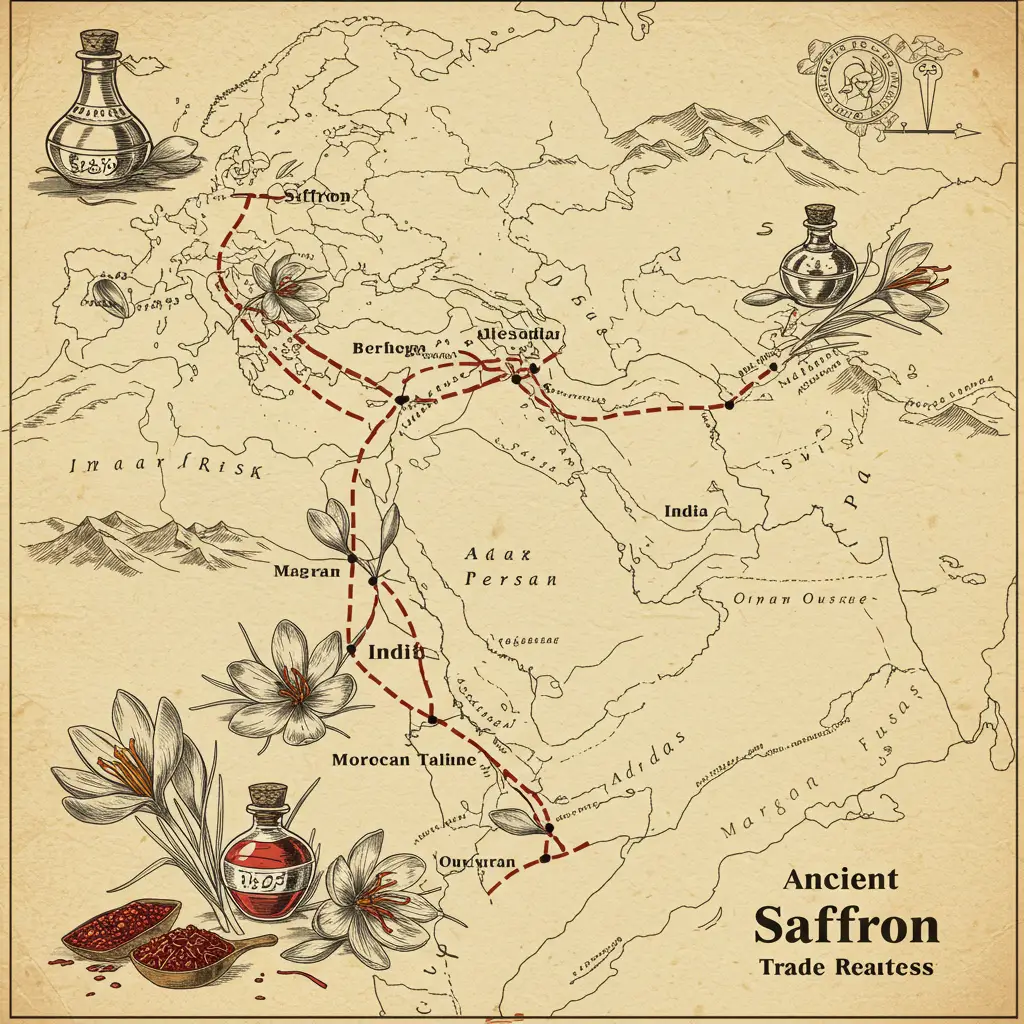
Saffron Spice story is as rich as its hue. Its use dates back over 3,000 years to ancient civilizations such as Greece, Persia, and India. Historians believe saffron was first cultivated in Bronze Age Crete. Encyclopedia Britannica – Saffron
- Ancient Uses: It was used as a dye in royal garments, a sacred perfume in religious rituals, and even as a remedy for ailments like insomnia and melancholy.
- Trade and Spread: Through the Silk Road and maritime trade, saffron spread from Persia and India to North Africa and Europe. Moroccan saffron, especially from Taliouine, became revered for its intense aroma and coloring power.
Today, Saffron is embedded in the cultural fabric of Morocco, Iran, Spain, and India, adding both flavor and status to countless dishes.
What Makes Saffron Spice So Unique?
Saffron Spice is harvested from the Crocus sativus flower, a sterile triploid plant that blooms for only two weeks each year. Each flower contains just three stigmas—the part used as the spice.
Key Compounds:
- Crocin – Responsible for saffron’s vivid golden-orange color.
- Picrocrocin – Gives saffron its slightly bitter, earthy flavor.
- Safranal – Produces saffron’s distinctive, intoxicating aroma.
The combination of these compounds results in saffron’s signature sensory profile—one unmatched by any substitute.
How Saffron Spice Is Grown & Harvested
Saffron’s high cost is no mystery once you understand how it’s produced:
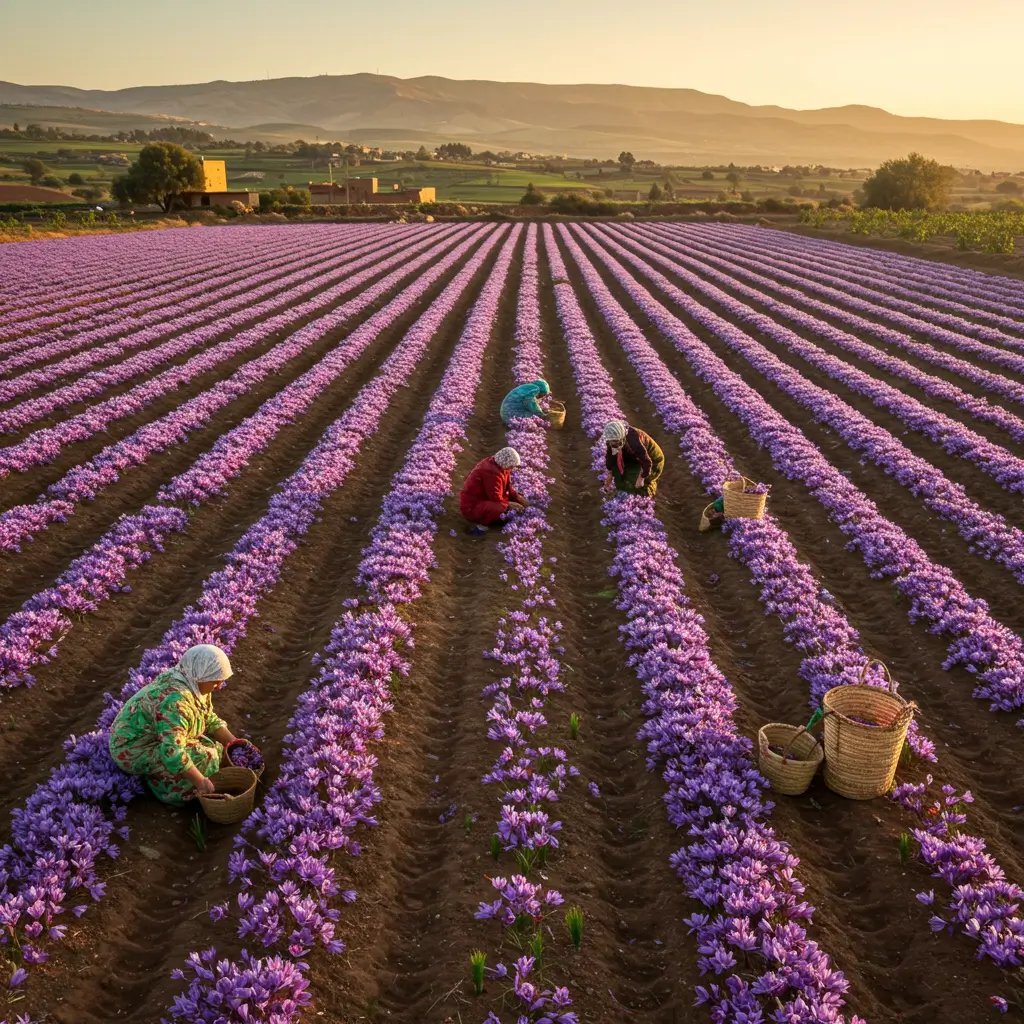
- Each Crocus sativus flower is hand-picked.
- The stigmas must be carefully separated and dried.
- It takes about 75,000 flowers to yield just 1 pound of saffron.
Harvest Season: In Morocco, Saffron Spice is harvested during October and November in the Taliouine region. Spain’s La Mancha and Iran’s Khorasan also follow similar cycles.
Regional Differences:
- Moroccan saffron: Known for intense fragrance and bold coloring.
- Iranian saffron: High volume production, slightly milder aroma.
Decoding Saffron Spice: Appearance, Grades, and Spotting Fakes
What Does Real Saffron Look Like?
- Deep red threads with slight yellow tips (not fully orange).
- Slightly trumpet-shaped threads.
- Rich aroma: sweet, earthy, and slightly metallic.
Grading System (ISO 3632):
- Category I: Premium grade, high in crocin/picrocrocin/safranal.
- Category II & III: Medium and basic culinary grades.
ISO 3632 Saffron Grading Standard (PDF summary)
Spotting Fakes:
- Common fakes: Safflower, corn silk, dyed threads, turmeric.
- Simple tests:
- Place in warm water. Real saffron releases color slowly and retains its shape.
- Rub between fingers: it shouldn’t break easily or stain hands.
The Guardian – How to Spot Fake Saffron
The Sensory Experience: What Does Saffron Spice Taste and Smell Like?
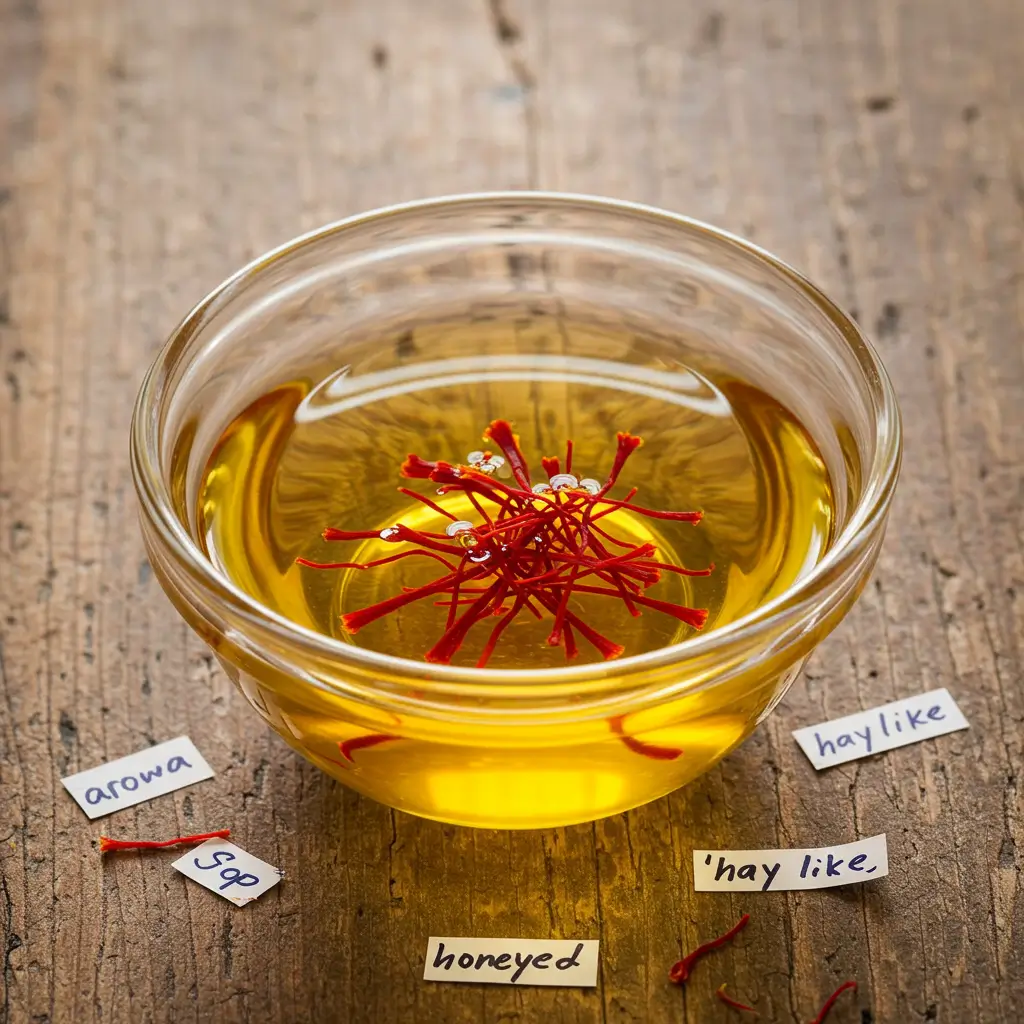
Describing saffron is like capturing poetry in words:
- Aroma: Intensely fragrant with hay-like, honeyed, and metallic notes.
- Flavor: Subtle yet layered—earthy, slightly bitter, floral, and exotic.
When bloomed, its flavor becomes richer and more pervasive, elevating even the simplest dishes.
Mastering Saffron Spice in the Kitchen: Culinary Uses & Techniques
Global Culinary Staples:
- Rice dishes: Moroccan lamb tagine.
- Drinks: Moroccan saffron tea, saffron milk.
- Breads & stews: Adds depth to bouillabaisse and Moroccan harira.
Tips for Use:
- Threads vs. Powder: Threads are more authentic and less prone to adulteration.
- Blooming: Steep in warm water, broth, or milk for 15–20 minutes.
- Dosage: Use 5–7 threads per serving. Less is more.
✅ Avoid adding it directly to dishes—it won’t release its full color or flavor.
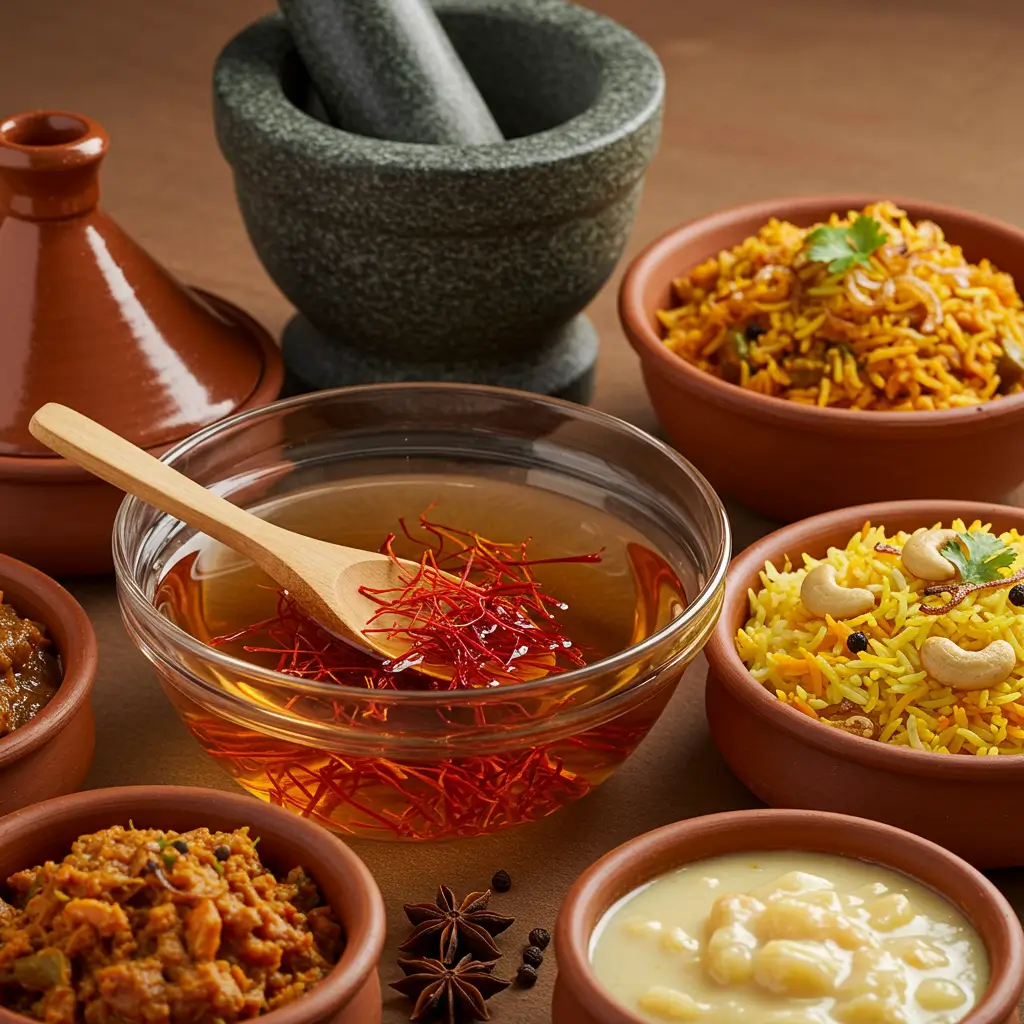
Saffron & Well-being: Potential Health Benefits
Traditional Uses: Used in Ayurveda, Chinese medicine, and Moroccan folk remedies for its mood-enhancing and healing properties.
Modern Evidence:
- Antioxidant: Fights oxidative stress.
- Mood support: May help alleviate depression symptoms ( Source) PubMed
- PMS relief: Shown to reduce severity of symptoms.
- Eye health: Possible benefits in age-related macular degeneration.
Source: Healthline – Saffron Health Benefits
Disclaimer: These benefits are still being studied. Always consult with a healthcare provider.
Smart Shopping & Storage: Buying the Best Saffron Spice
Where to Buy:
- Specialty spice stores
- Trusted online retailers (avoid low-cost options)
- Moroccan co-ops and certified producers
Packaging Tips:
- Look for origin labels (e.g., Moroccan saffron from Taliouine).
- Check for ISO grading if available.
- Avoid powdered saffron unless from a known brand.
Storage:
- Store in airtight containers.
- Keep in a cool, dark place.
- Shelf life: Up to 2–3 years with proper storage.
🌿 Recommended: Golden Saffron – Grade A+ Quality
For a premium culinary experience, try Golden Saffron – 100% natural, lab-tested, and perfect for Moroccan dishes, teas, and gourmet cooking. Hand-harvested Super Negin threads offer vibrant color and bold aroma.
- ✅ Grade A+ Super Negin Threads
- ✅ Non-GMO, Lab-Tested
- ✅ Vegetarian, Vegan & Gluten-Free Friendly
Saffron Spice Around the Globe: Cultural Significance
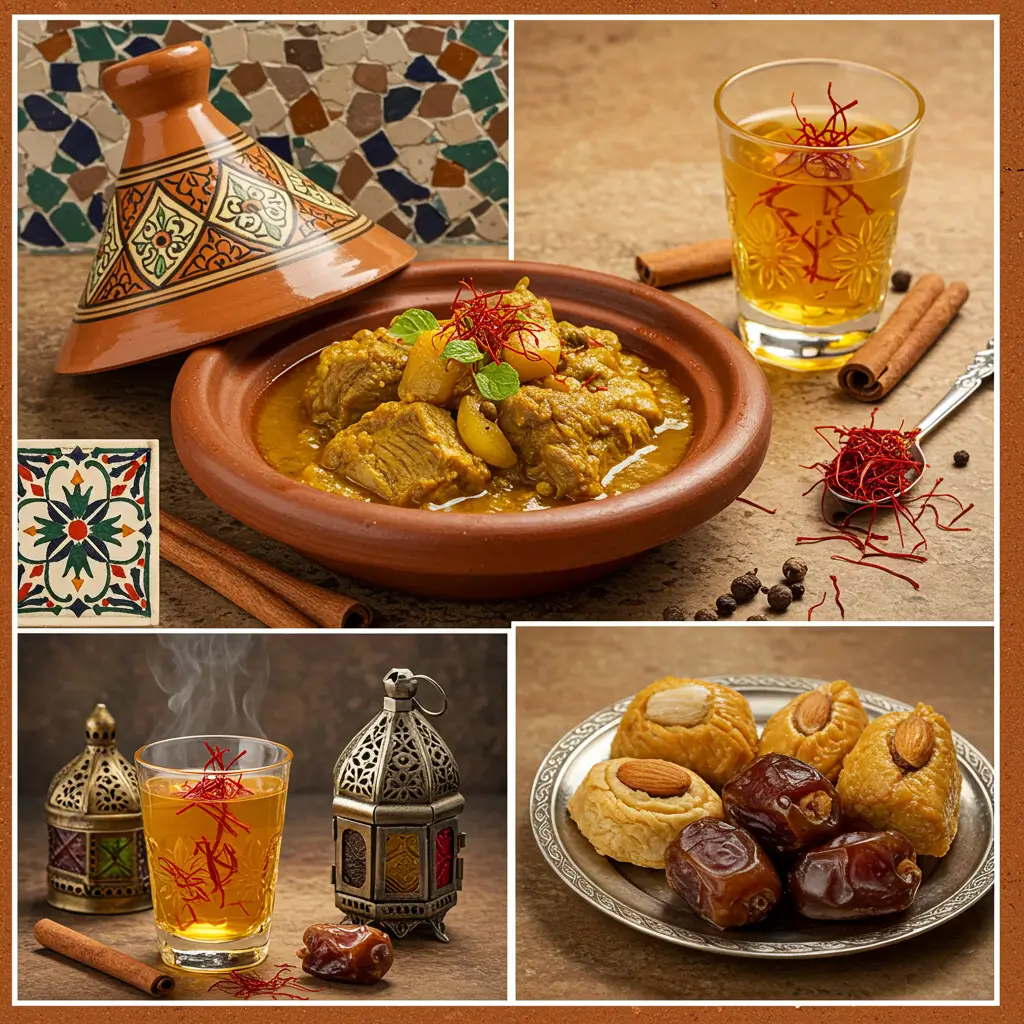
- Morocco: Central to tagines and couscous.
- Iran: Symbol of celebration, used in rice, tea, and desserts.
- India: In sweets and spiritual offerings.
Saffron Substitutes (And Why They Fall Short)
Common Substitutes:
- Turmeric: Similar color but lacks aroma and flavor.
- Safflower: Visually similar but flavorless.
- Annatto: Provides yellow color but different taste.
Saffron is truly irreplaceable. Substitutes may mimic appearance, not experience.
Saffron FAQ
Why is saffron so expensive?
Because it’s hand-harvested, extremely labor-intensive, and low-yield.
How much saffron do I use per person?
About 5–7 threads per serving.
Can you eat raw saffron threads?
Technically yes, but it’s best bloomed to unlock flavor and aroma.
Is saffron powder as good as threads?
Threads are preferred for authenticity and quality control.
What’s the best saffron in the world?
Many chefs favor Moroccan saffron for aroma.
Conclusion
Saffron spice isn’t just a culinary ingredient—it’s a cultural gem, a sensory journey, and a legacy of craftsmanship. Whether you’re preparing a rich Moroccan tagine or a delicate saffron tea, the magic lies in how little it takes to transform your dish.
💡 Disclosure: This article contains affiliate links. We may earn a commission if you make a purchase through these links—at no additional cost to you. We only recommend products we truly trust, all carefully selected based on quality and real-world experience.
Explore our saffron recipes and let your culinary creativity shine!
Next: Discover our step-by-step guide to making Moroccan Chicken Tagine with Saffron or explore saffron’s health benefits in depth.
Have you tried using it in your recipes? Tell us about your experiences!
There are no reviews yet. Be the first one to write one.

